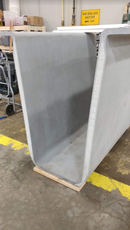
Processing Your Payment
Please do not leave this page until complete. This can take a few moments.
- News
-
Editions
-
- Lists
-
Viewpoints
-
Our Events
-
Event Info
- Women's Leadership Forum 2025
- On the Road with Mainebiz in Bethel
- Health Care Forum 2025
- On The Road with Mainebiz in Greenville
- On The Road with Mainebiz in Waterville
- Small Business Forum 2025
- Outstanding Women in Business Reception 2025
- On The Road with Mainebiz in Bath
- 60 Ideas in 60 Minutes Portland 2025
- 40 Under 40 Awards Reception 2025
- On The Road with Mainebiz in Lewiston / Auburn
- 60 Ideas in 60 Minutes Bangor 2025
Award Honorees
- 2025 Business Leaders of the Year
- 2024 Women to Watch Honorees
- 2024 Business Leaders of the Year
- 2023 NextUp: 40 Under 40 Honorees
- 2023 Women to Watch Honorees
- 2023 Business Leaders of the Year
- 2022 NextUp: 40 Under 40 Honorees
- 2022 Women to Watch Honorees
- 2022 Business Leaders of the Year
-
-
Calendar
-
Biz Marketplace
- News
-
Editions
View Digital Editions
Biweekly Issues
- April 21, 2025 Edition
- April 7, 2025
- March 24, 2025
- March 10, 2025
- Feb. 24, 2025
- Feb. 10, 2025
- + More
Special Editions
- Lists
- Viewpoints
-
Our Events
Event Info
- View all Events
- Women's Leadership Forum 2025
- On the Road with Mainebiz in Bethel
- Health Care Forum 2025
- On The Road with Mainebiz in Greenville
- On The Road with Mainebiz in Waterville
- + More
Award Honorees
- 2025 Business Leaders of the Year
- 2024 Women to Watch Honorees
- 2024 Business Leaders of the Year
- 2023 NextUp: 40 Under 40 Honorees
- 2023 Women to Watch Honorees
- 2023 Business Leaders of the Year
- + More
- 2022 NextUp: 40 Under 40 Honorees
- 2022 Women to Watch Honorees
- 2022 Business Leaders of the Year
- Nomination Forms
- Calendar
- Biz Marketplace
Brewer company uses composite technology to make ‘100-year’ girder for bridge
 Courtesy / AIT Bridges
AIT Bridges has launched a composite “tub girder,” a U-shaped beam the company says is lighter, lower-cost and longer-lasting than typical concrete and steel girders.
Courtesy / AIT Bridges
AIT Bridges has launched a composite “tub girder,” a U-shaped beam the company says is lighter, lower-cost and longer-lasting than typical concrete and steel girders.
AIT Bridges, based in Brewer, on Tuesday unveiled a new bridge girder made of composite materials, and says the product is lighter and longer-lasting than traditional concrete and steel girders.
The new component is called a tub girder, and is an extension of the composite bridge systems offered by AIT Bridges, a division of Advanced Infrastructure Technologies.
Long-lasting bridges
The system, developed in cooperation with the University of Maine’s Advanced Structures and Composites Center, was created to provide an affordable, long-term solution for traditional steel and concrete medium-span deck bridges. Ultimately, AIT hopes the products will replace concrete and steel girders in the marketplace.
AIT is now manufacturing girders for its first such span, to be constructed in Hampden.

The tub girder is made with a lightweight fiber-reinforced polymer. The girders are supported on standard foundations for bridges that include either a precast concrete panel deck or a cast-in-place concrete bridge deck.
According to the release, the girder can be used for a variety of spans up to 100 feet, and offers several advantages.
• Sustainability: The manufacturing process and installation have a smaller carbon footprint than those of conventional steel and concrete girders.
• Longevity: The girder is expected to last 100 years or more. It is naturally corrosion-resistant and made of materials designed to overcome many environmental hazards. The girder requires little or no maintenance.
• Weight: The girder is 50% lighter than steel and 75% lighter than concrete girders. The weight reduction allows for a decrease in large equipment on the construction site and significantly reduces transportation costs.
• Affordability: The girder is expected to have the lowest maintenance cost in the industry, and a much lower initial cost compared to similar steel and concrete solutions.
About AIT Bridges
AIT Bridges is a division of Advanced Infrastructure Technologies, a designer and supplier of composite bridge systems and structural components for commercial construction. AIT Bridges systems utilize components from technology developed over an 11-year period by the Advanced Structures and Composites Center at the University of Maine. The goal was to develop a rapidly deployable bridge technology for the military. In 2008, Advanced Infrastructure Technologies was formed to commercialize an inflatable arch technology. AIT Bridges expanded the composite product line and designed a composite arch bridge system built from the original technology.














0 Comments